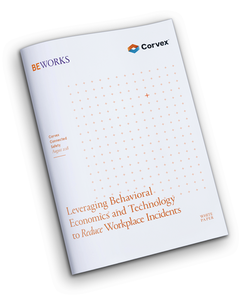 Behavioral Economics Helps Companies Identify What Really Motivates Employees Have you ever asked an employee to take on a special assignment in exchange for a cash bonus and assume you’ll see a job well done - only to be disappointed by their lack of interest or action? It’s not unusual according to the science of behavioral economics. The mind can be difficult to navigate, according to a white paper from Corvex, as the field of behavioral economics teaches us that human decision-making is often irrational and that willingness to comply is influenced by a number of heuristics and biases. But studying behavioral economics can provide a framework that helps employers understand when and how people on their team make decisions. The practice can also lead much safer and higher quality work experiences. The lessons of BE can be used to create environments that encourage employees to make better decisions and report more problems both in the workplace and beyond.
Dan Ariely is one of the world’s leading behavioral scientists, an author of three books on the topic and a frequent TED speaker. He breaks down the connection between psychology and business practice for today’s companies looking to motivate employees – saying, “people want to feel like they are contributing”…”They want a sense of purpose, a sense that work itself has an impact.” That’s why Ariely says traditional companies that rely on financial compensation as the main motivator for good behavior should revise their model to add other elements like meaning, value, challenge, ownership, identity and pride. In one of Ariely’s TED Talks, he explains that it’s just too simplistic of a view to assume that people are only motivated by dollar signs. Many people want to feel challenged and be inspired, he says. Others want something to fight for and need to take pride in what they do, which means we are motivated by different reasons. Ariely suggests in one article that instead of offering cash-only incentives, that employers consider showing their employees that they are truly vested in their future by contributing to a children’s college fund or providing other more long-term related rewards. Those that add real worth. So, how do companies create feelings of belonging and happiness for their employees? It often comes from creating a real sense of purpose, which isn’t as complicated as many organizations think it is. According to Paul Dolan, another expert in the field, it’s as simple as giving employees feedback in a timely matter and letting them know that what they are doing is indeed important. Spending time with leadership should be something they look forward to – not something they would avoid if they could. Employees need to hear from their leadership and direct supervisors how they add value to an organization and better understand the positive impact their work has on the end customer. This type of consistent positive verbal reinforcement may sound trivial but it can help drive big changes for a company. And while behavior in the workplace can certainly bring a lot of unknowns, there is proof that employees who are happier tend to earn more, work harder, have more energy and are sick less often. Comments are closed.
|

